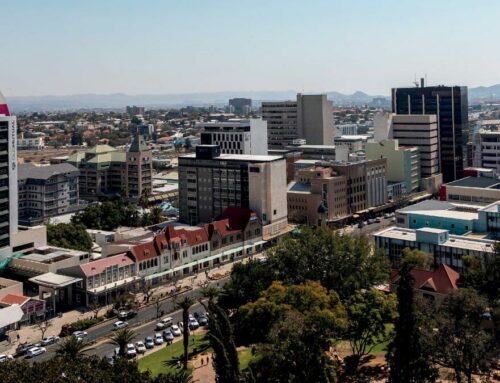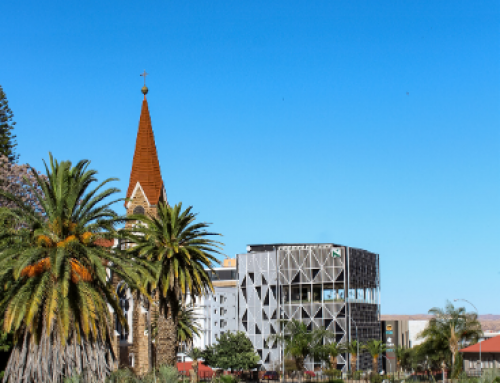Global economic normalisation, electoral crossroads, and Namibia’s path to recovery
With 2024 well underway, now seems to be an opportune time to look at what the year is expected to have in store in terms of the larger global economic outlook and what it means for Namibia.
Looking at current forecasts for the year, it is tempting to describe the global economic outlook for 2024 as one of “normalisation” for the first time this decade. Inflation is easing across the world, which should prompt central banks to start pivoting from restrictive monetary policy, and the risk of a US recession has receded. However, if there is one lesson to be taken from the last four years, it is that the world is unpredictable, with geopolitical tensions a particular concern at present.
One aspect of the year ahead that is perhaps not so normal is the scope of general elections the world will be seeing. We looked at this in depth in last month’s edition, in which we mentioned that voters in countries representing 41% of the world’s population and 42% of its gross domestic product will have a chance to elect new leaders during the year. Of course, the election that is likely to be the primary focus of news outlets, investors and foreign governments is that of the United States, where the age of the incumbent, Joe Biden, is as much of a concern to voters as the unpredictability of his likely opponent, Donald Trump. A win for Trump, which is what polls are currently suggesting, could bring sharp policy reversals in 2025 and see import tariffs implemented against trade partners like Europe and rivals like China, who will likely retaliate in kind.
The global, and particularly the US economy, has shown surprising resilience, as the most forecasted recession in history has yet to make its landfall in the face of the most aggressive global tightening of monetary policy in decades. Central banks, such as the US Federal Reserve, have been fighting inflation by raising interest rates since March 2022. Typically, implementing monetary tightening tends to trigger a recession, as slowing rampant inflation is in some ways similar to deflating a balloon: it is difficult to do it gently. But it does seem as if the Fed is on the right track.
They are treading a fine line, though. If the Fed is wrong, cutting interest rates too soon will act as an unnecessary stimulus and inflation will reaccelerate, much like we saw in the 1970s, which is what they are trying to avoid. Supply chains, which were disrupted by the pandemic, are just about righted, labour shortages have eased and inflation in the US is set to end the year at around 2.5%, just above the Fed’s target, which should give them some leeway to start easing the relatively tight monetary policy of the last two years.
We are similarly expecting the rate-cutting cycle to start in South Africa towards the middle of the year, with the market currently pricing in three 25-basis-point cuts by the end of the year, although this will of course depend on the incoming inflation data. However, Namibia’s monetary policy path going forward is somewhat less certain, as the country’s repo rate is already 50 basis points below that of South Africa. While we do not expect to see further rate hikes, unless the Bank of Namibia (BoN) has to prevent further capital outflows to higher yielding investments in South Africa, it is by no means a certainty that the BoN will immediately follow suit once the South African Reserve Bank starts cutting rates, as the 50-basis-point buffer will need to be closed at some point. That being said, we do expect to see some cuts by the BoN this year and are therefore anticipating monetary policy normalisation both globally and locally.
As briefly mentioned earlier, one of the bigger risks to what should otherwise be a “normal” year, is global geopolitical tensions. The war in Ukraine, the Israel-Gaza conflict and the tensions over Taiwan have all been well documented. Each of these regions are at a geopolitical crossroads, where influential nations hold significant stakes: the Middle East grapples with issues surrounding oil and trade routes, Eastern Europe navigates challenges related to stability and power dynamics, and East Asia faces intricate considerations regarding advanced technological supply chains.
Locally, the economic outlook looks more optimistic. The year started off with yet another “significant” light oil discovery at Galp Energia’s Mopane-1X exploratory offshore well. We expect to get a better idea of the potential sizes of the various oil finds of the last couple of years once the results of the various appraisal and well flow tests are published later this year. Namibia’s post-pandemic economic recovery has not been broad based, with certain sectors, such as construction, still feeling the pain from the economic contraction that started in 2016, while others, like mining and tourism, have been thriving and are expected to continue doing so in 2024.
As we embark on the journey through 2024, the global economic landscape appears poised for a period of normalisation after years of unpredictability. With supply chains reworked, labour supply has risen in the developed world and inflation has eased. The year holds promise for continued recovery, exploration and adaptation, underscoring the dynamic and unpredictable nature of the economic landscape.
Danie van Wyk
IJG believes in tailoring their services to a client’s personal and business needs.
For more information, visit ijg.net







